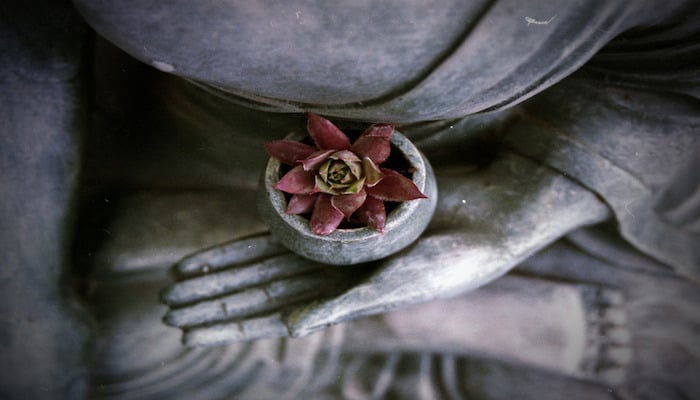Blog: Buddhist Meditation in Depth Hypnosis
By Isa Gucciardi, Ph.D.
Depth Hypnosis is a therapeutic process that blends elements of Shamanism, Buddhism, transpersonal psychology, hypnotherapy, and energy medicine. Buddhism is one of the main engines of Depth Hypnosis, and meditation is one of many tools we use to help clients alter their state of consciousness. Meditation enables clients to shift their focus from their “thinking minds” to their inner experience.
One type of Buddhist meditation is Samatha meditation. Samatha is used frequently in Depth Hypnosis when clients are having a hard time settling, sleeping, or are experiencing anxiety. Samatha is translated as “quiescence.” With Samatha, you are asked to focus on your breath. When you focus your awareness on your breath, it can bring you into a state of quietude, allowing you to go beyond the usual chatter of your conscious mind. When you can access this place of inner quiet, it’s easier to delve into internal inquiry. Samatha is a wonderful antidote for the chaos many people feel, both in their inner and outer lives.
In Depth Hypnosis, we also use Vipassana meditation, which is a process of self-inquiry. When doing a Vipassana meditation, you focus your attention on something you would like to understand better. You can use Vipassana as a vehicle for understanding many things— a problem you are having, a concept you want to investigate, or an emotion you want to explore. You can use the discipline, awareness, and quietude you have developed with Samatha to comprehend your experiences on a deeper level through Vipassana.
There are many different forms of Vipassana. Vipassana is often called insight meditation because of the insights people receive when they engage in this practice. There can be profound teachings when you approach self-inquiry from a place of inner stillness. In many ways, Depth Hypnosis is an interactive Vipassana. Hypnotherapy can catalyze self-awareness, and the questions a Depth Hypnosis Practitioner asks when their client is in a hypnotic state become the point of inquiry for Vipassana meditation.
In Depth Hypnosis, we also have meditations designed to develop each of the Four Immeasurables. In Buddhism, the Four Immeasurables are the four virtues of loving-kindness, compassion, empathetic joy, and equanimity. Having a practice for developing joy, equanimity, compassion and loving-kindness can deepen your relationship with yourself and others, giving you a visceral experience of the Four Immeasurables and how their wisdom might be applied in your life. Practicing these meditations on a regular basis can transform your consciousness.
In Buddhism, there are three levels of learning: conceptual learning, reflection upon what you’ve learned conceptually, and meditation. You understand things conceptually in your external world, then bring what you have learned conceptually into your internal world and reflect upon it, and then you meditate. Buddha himself said, “Don’t listen to what I am saying, look at the words. Meditate on the words.” He encouraged people not to follow him blindly.
In the classes I teach at the Sacred Stream Center in Berkeley, CA, every teaching and practice I offer conceptually is then reflected on through meditation. It can feel strange for students at first, because we are so used to learning things conceptually and then regurgitating them. However, when we do this, we don’t always understand what the information actually means to us. This way of learning is fundamental and ordinary in Buddhist training, and I try to bring these tools of scientific Buddhist inquiry to every class I teach.
Editors’ Note: To explore the role of Buddhist meditation in Depth Hypnosis further, check out Isa’s classes: Applied Buddhist Psychology 1 and Applied Buddhist Psychology 2.
ENJOYING THE STREAM OF CONSCIOUSNESS BLOG? SIGN UP FOR FREE UPDATES!



